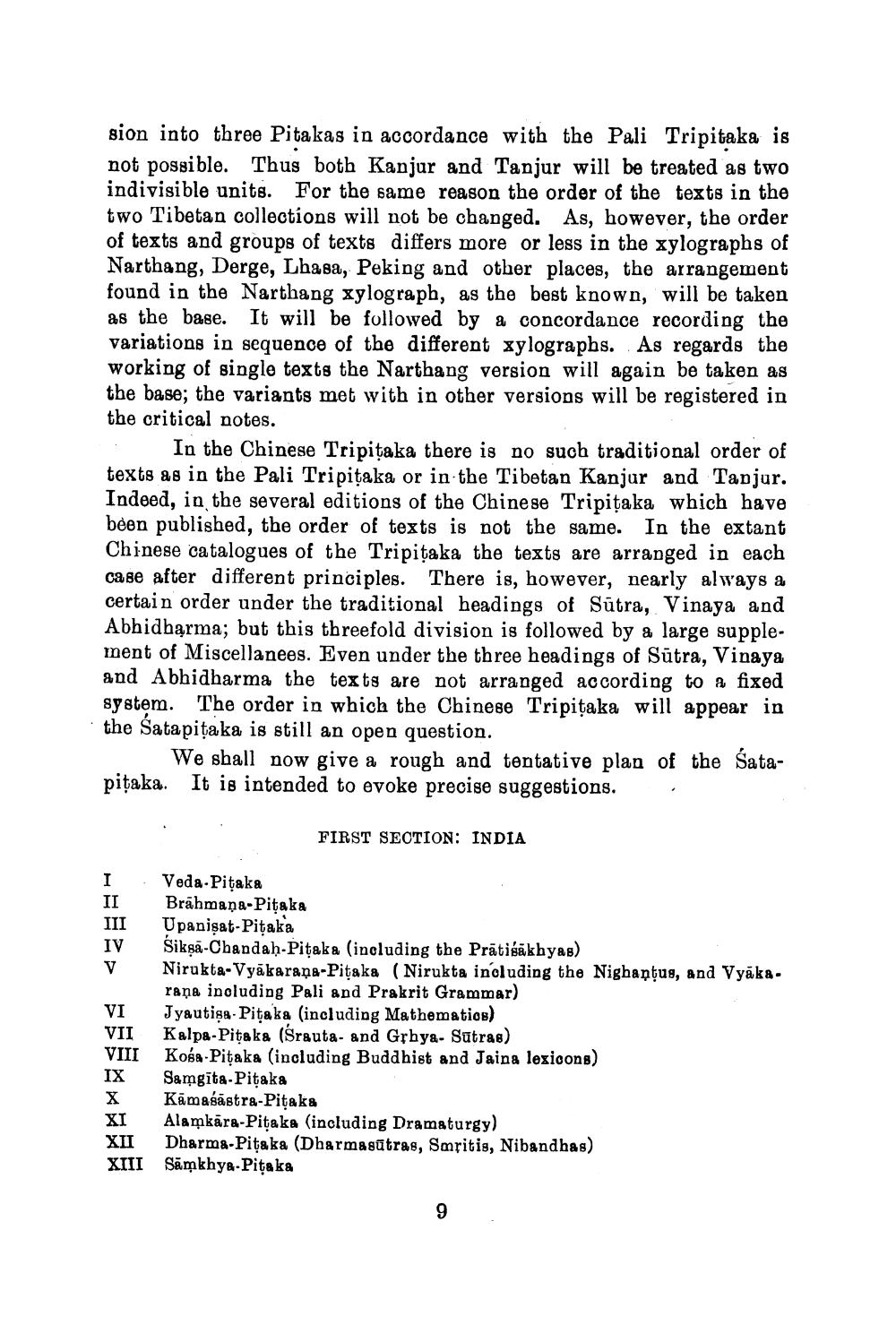Book Title: Satapitaka Author(s): Publisher: View full book textPage 9
________________ sion into three Pitakas in accordance with the Pali Tripitaka is not possible. Thus both Kanjur and Tanjur will be treated as two indivisible units. For the same reason the order of the texts in the two Tibetan collections will not be changed. As, however, the order of texts and groups of texts differs more or less in the xylographs of Narthang, Derge, Lhasa, Peking and other places, the arrangement found in the Narthang xylograph, as the best known, will be taken as the base. It will be followed by a concordance recording the variations in sequence of the different xylographs. As regards the working of single texts the Narthang version will again be taken as the base; the variants met with in other versions will be registered in the critical notes. In the Chinese Tripitaka there is no such traditional order of texts as in the Pali Tripitaka or in the Tibetan Kanjur and Tanjur. Indeed, in the several editions of the Chinese Tripitaka which have been published, the order of texts is not the same. In the extant Chinese catalogues of the Tripitaka the texts are arranged in each case after different principles. There is, however, nearly always a certain order under the traditional headings of Sutra, Vinaya and Abhidharma; but this threefold division is followed by a large supplement of Miscellanees. Even under the three headings of Sutra, Vinaya and Abhidharma the texts are not arranged according to a fixed system. The order in which the Chinese Tripitaka will appear in the Satapitaka is still an open question. We shall now give a rough and tentative plan of the Satapitaka. It is intended to evoke precise suggestions. FIRST SECTION: INDIA Veda-Pitaka II Brahmana-Pitaka III Upanisat-Pitaka IV Siksa-Chandah-Pitaka (including the Pratisak byas) Nirukta-Vyakarana-Pitaka (Nirukta including the Nighantus, and Vyaka. rana including Pali and Prakrit Grammar) VI Jyautiga. Pitaka (including Mathematios) Kalpa-Pitaka (Srauta- and Grhya- Sutras) VIII Kosa-Pitaka (including Buddhist and Jaina lexicons) IX Samgita-Pitaka X Kamasastra-Pitaka XI Alamkara-Pitaka (including Dramaturgy) XII Dharma-Pitaka (Dharmasutras, Smritis, Nibandhas) XIII Samkhya-Pitaka VII 9Page Navigation
1 ... 7 8 9 10 11 12 13 14 15 16 17 18 19 20 21 22 23 24 25 26 27 28 29 30 31
